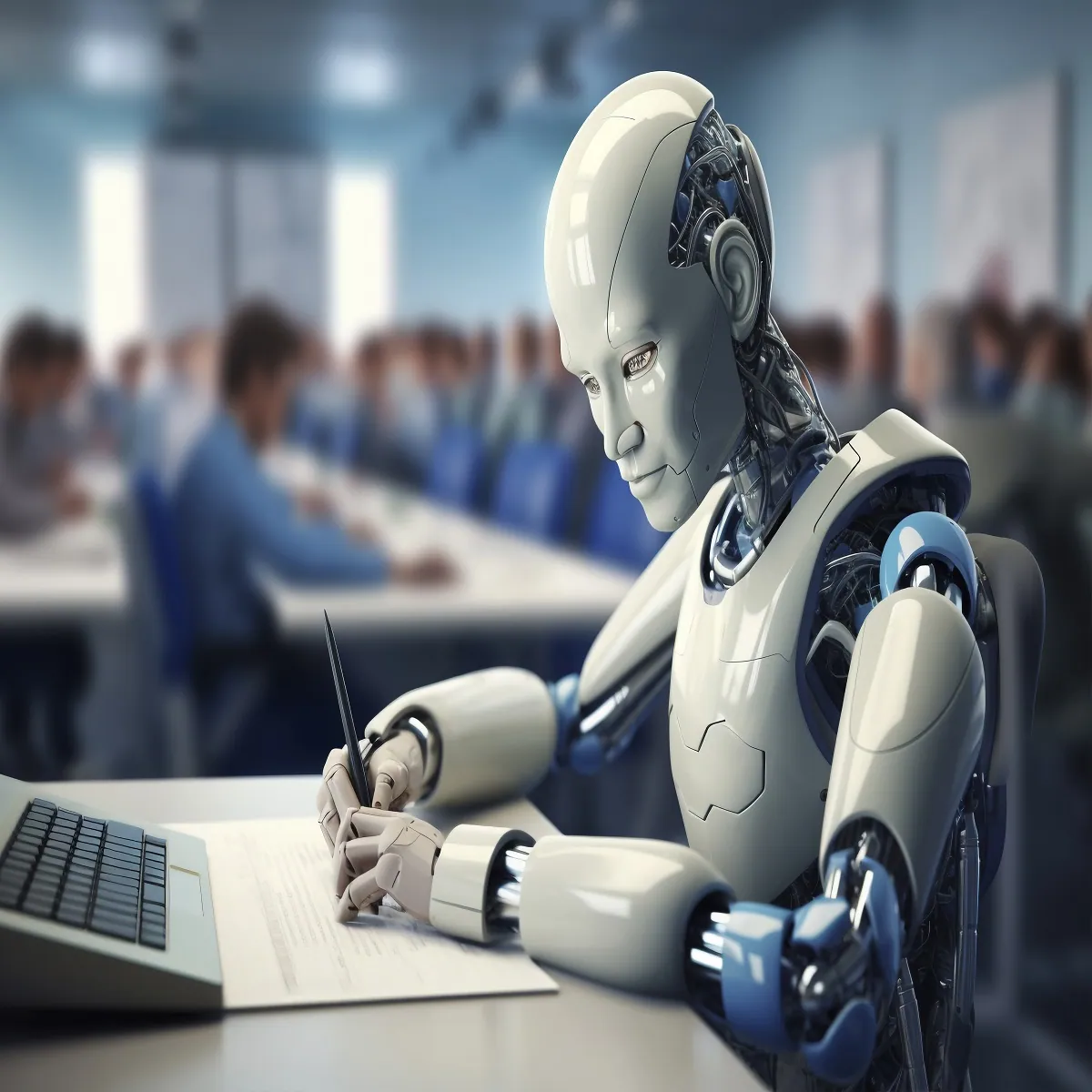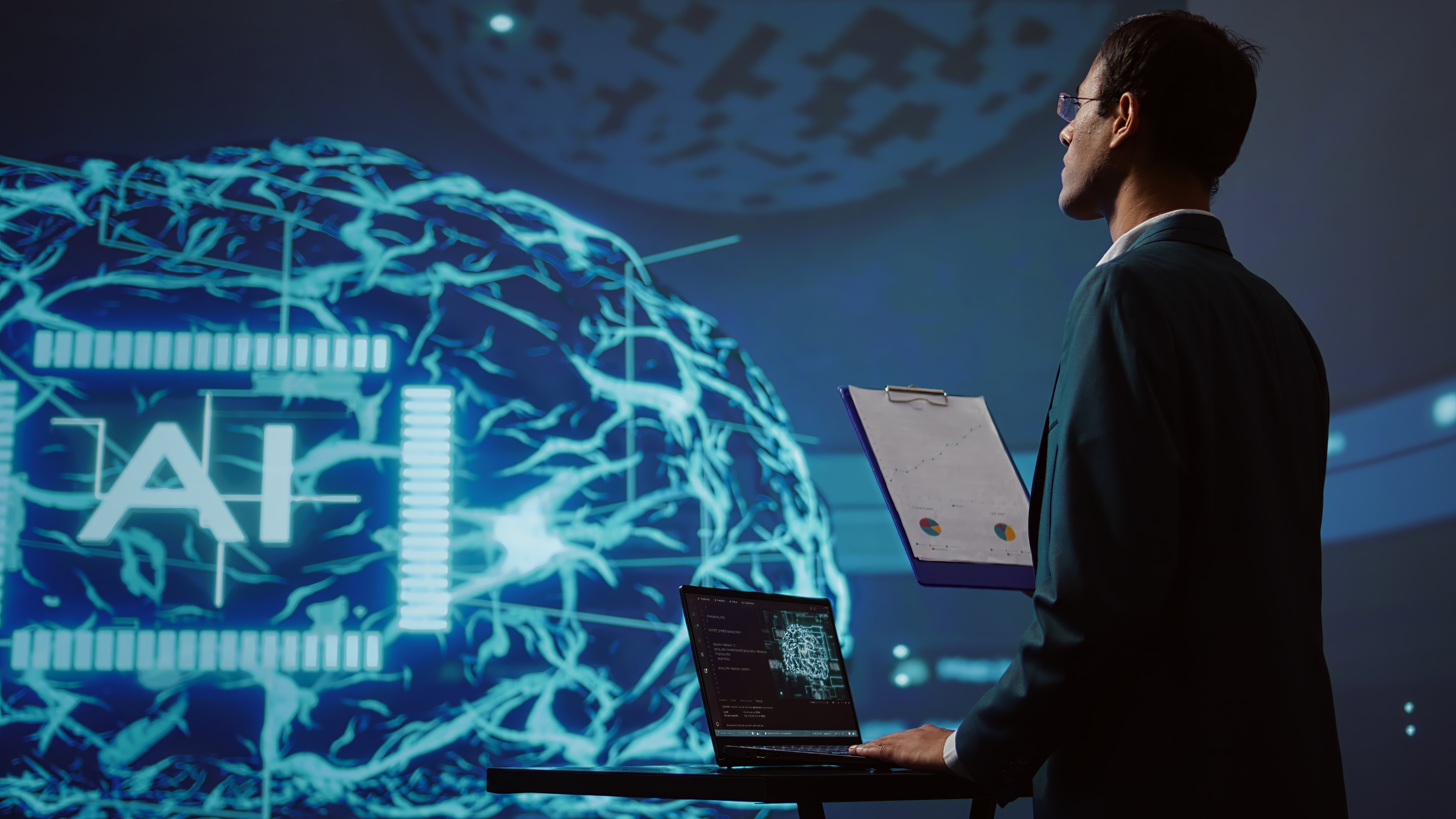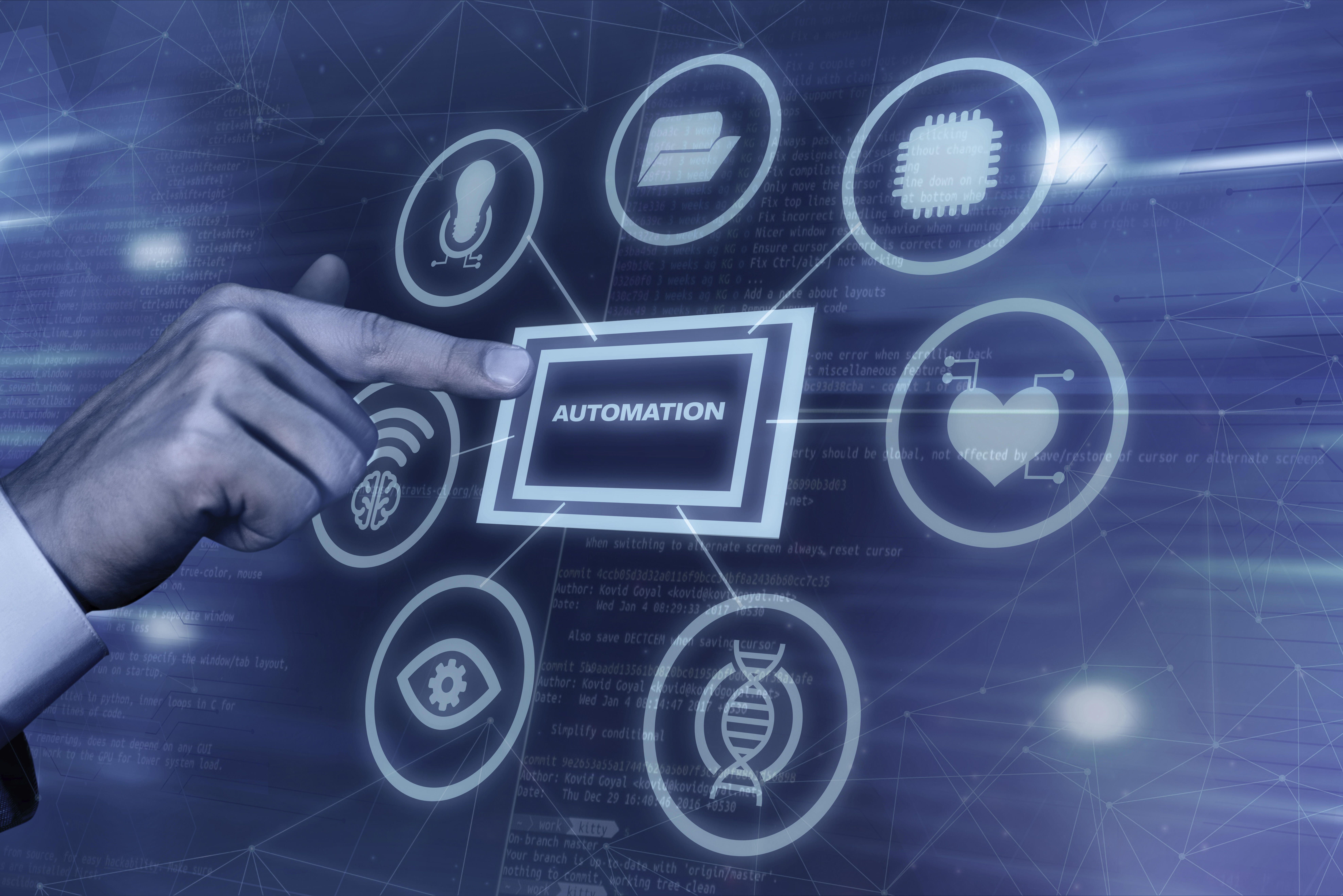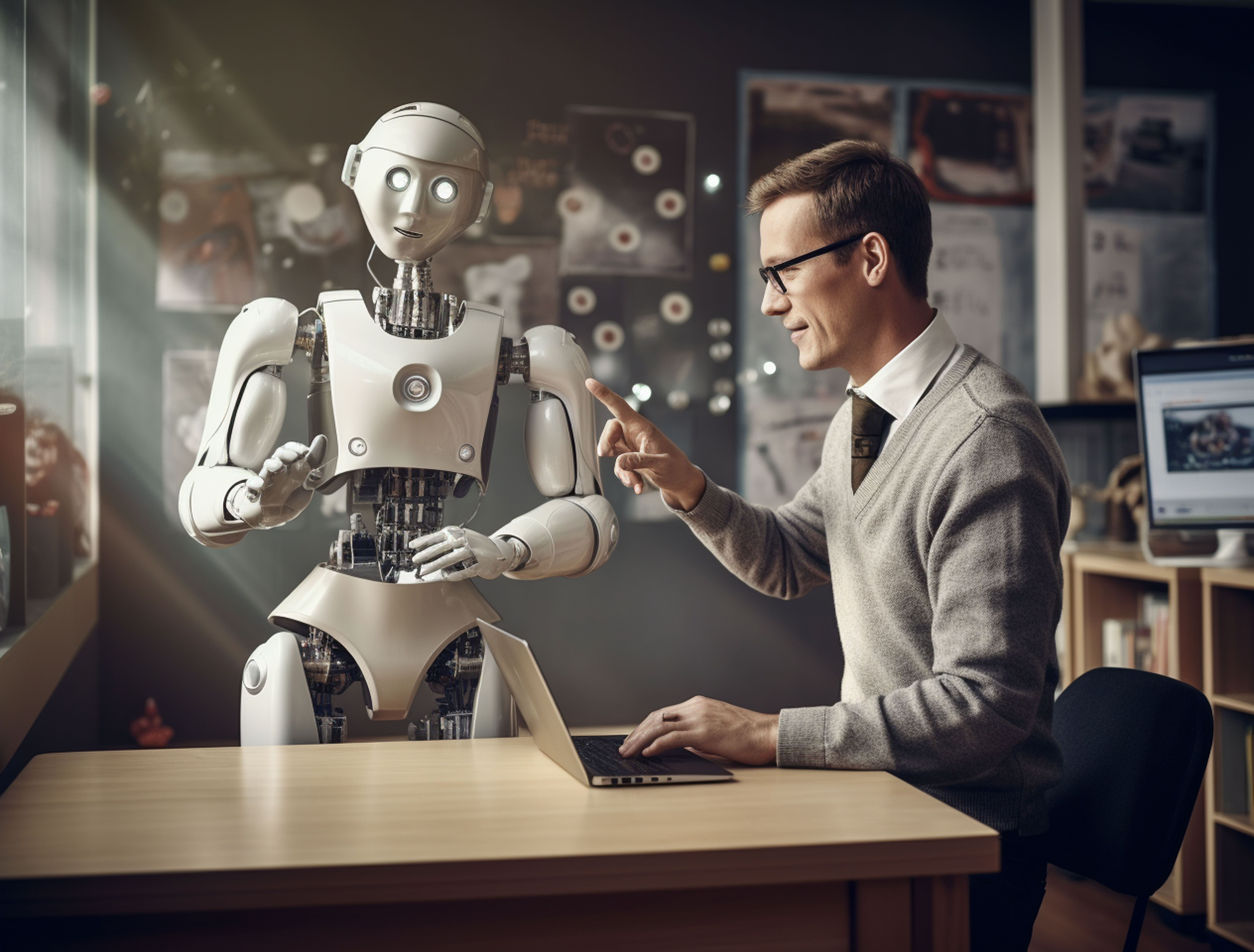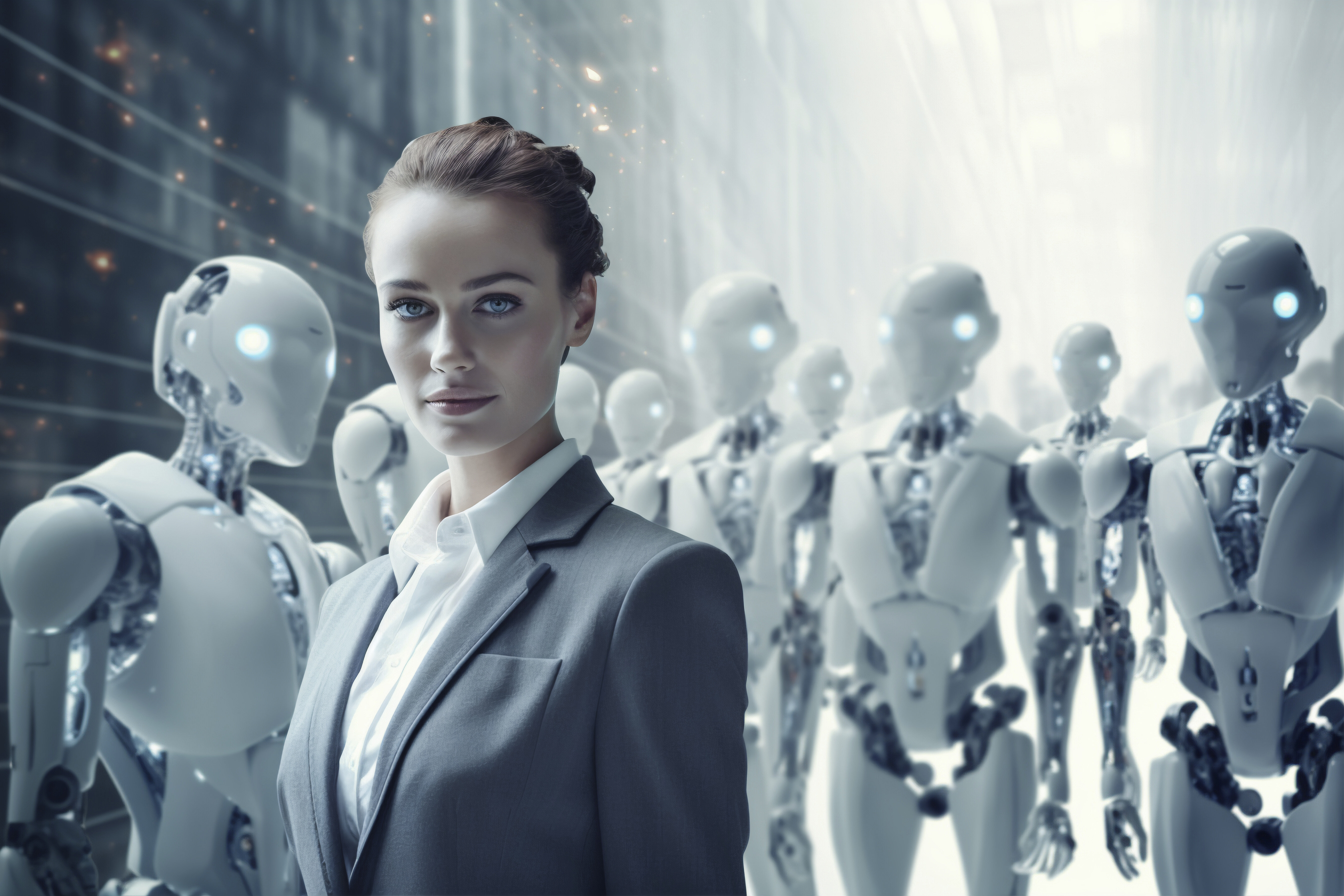AI Machine Learning: A Complete Beginner’s Guide
What are AI and Machine Learning?
Artificial Intelligence (AI) refers to the development of computer systems or machines that can perform tasks typically requiring human intelligence. These tasks encompass a wide range of cognitive functions, including reasoning, problem-solving, decision-making, language understanding, and even visual perception. AI systems are designed to simulate human cognitive abilities, enabling machines to process and analyse vast amounts of data, identify patterns, and make informed decisions without direct human input.
By mimicking human thought processes, AI systems can adapt to new situations and improve their performance over time. This adaptability allows them to handle complex problems, make predictions based on historical data, and even perform tasks that would be impractical for humans to do manually. For instance, AI-powered machines can process data at speeds far beyond human capabilities, enabling faster decision-making and more efficient workflows.
What is Machine Learning (ML)?
Machine Learning (ML) is a subset of AI that focuses on teaching machines to learn from data and improve their performance over time without being explicitly programmed. In traditional programming, developers write specific instructions for a computer to follow. In contrast, machine learning allows algorithms to identify patterns in data, learn from them, and make predictions or decisions based on new data. This makes machine learning particularly useful for tasks that are too complex or dynamic for traditional programming methods, such as spam filtering, recommendation systems, and fraud detection.
How are AI and Machine Learning Interrelated?
AI and machine learning are closely connected, but they serve different roles in the development of intelligent systems. AI is the broader concept that aims to create intelligent machines that can perform tasks typically requiring human intelligence. Machine learning is one of the most powerful tools used within AI to help systems "learn" from experience. Essentially, machine learning is a way to implement AI by allowing machines to improve their performance based on data rather than following predefined rules.
How Does Artificial Intelligence Work with Machine Learning?
Machine learning is a key component in the development of artificial intelligence. It provides AI systems with the ability to learn from data and improve over time without being explicitly programmed. While AI refers to creating intelligent machines capable of performing tasks that require human-like cognitive functions, machine learning is the tool that helps these systems learn from experiences. By processing large amounts of data, machine learning algorithms can detect patterns and relationships that enable AI systems to make decisions, predictions, or recommendations.
The Importance of Machine Learning in Modern AI Systems
Machine learning is vital for the progress of modern AI systems as it enables them to evolve and become more accurate over time. Traditional AI systems required humans to program every possible scenario and decision. However, with machine learning, AI systems can "teach themselves" by identifying patterns and adjusting their behaviour based on new data. This allows AI systems to become more robust, handle complex tasks, and perform better in dynamic environments..
Common Applications of AI with Machine Learning
AI powered by machine learning is used in a variety of applications across different industries. One prominent example is self-driving cars, where machine learning enables the vehicle to recognize its surroundings, make real-time decisions, and navigate roads safely without human intervention. Another widespread application is recommendation systems, such as those used by Netflix and Amazon.
What are the Basics of AI Machine Learning?
Machine learning relies on three essential components to function effectively: data, algorithms, and models. Data is the foundation of machine learning, as algorithms learn from it to make predictions or decisions. Algorithms are the mathematical methods used to process and analyse this data. The model is the output of the learning process, representing the learned patterns or rules that the algorithm has identified from the data. Together, these components work in tandem to create machine learning systems that can automate complex tasks, recognize patterns, and make accurate predictions.
How Machine Learning Models Learn from Data
Machine learning models learn by analysing large datasets to identify patterns, correlations, and trends. The process begins with feeding data into the algorithm, which adjusts its parameters to minimize errors and improve predictions. Through repeated iterations, the model refines its understanding and becomes more accurate. For example, in supervised learning, the model compares its predictions to the actual outputs and adjusts accordingly.
Types of Machine Learning
Machine learning can be categorized into three primary types, each serving a unique function. Supervised learning involves training an algorithm on labelled data, where each input is paired with the correct output. The goal is for the algorithm to learn the relationship between these inputs and outputs, enabling it to predict the correct output for new, unseen data. Common applications include email spam detection and image classification. In contrast, unsupervised learning deals with unlabelled data, where the algorithm must discover patterns and relationships in the data without knowing the desired outcomes beforehand. This type of learning is used for tasks like clustering and anomaly detection, such as grouping customers based on purchasing behaviour. Finally, reinforcement learning is an interactive approach where an agent learns by interacting with an environment and receiving feedback in the form of rewards or penalties.
How Does Artificial Intelligence with Machine Learning Work?
In AI machine learning, data plays a crucial role as it is the foundation from which the system learns. Raw data is processed and used by machine learning algorithms to detect patterns, identify trends, and make decisions. The algorithm is a set of mathematical instructions designed to learn from this data and adjust its predictions based on past experiences. Data can come in various forms, including text, images, audio, or numerical data, and each type of data may require different types of algorithms to process effectively. The quality and amount of data directly impact the performance and accuracy of the machine learning model.
The Process of Training an AI Machine Learning Model
Training a machine learning model is an iterative process where the algorithm learns from the data to make better predictions. Initially, the model is presented with a training dataset, which consists of input-output pairs. The algorithm uses this data to adjust its parameters and "learn" the relationship between the inputs and outputs. During training, the algorithm makes predictions, compares them to the actual outcomes, and adjusts itself based on the error, a process known as minimizing the loss function. This training continues until the model can make accurate predictions on new, unseen data.
The Concept of Features, Labels, and Training Sets
In machine learning, features refer to the individual variables or characteristics of the data that are used as input for the model, such as age, height, or pixel values in an image. Labels, on the other hand, are the outcomes or results the model is trying to predict or classify, like whether an email is spam or not. A training set is the dataset used to train the model, containing both features and their corresponding labels. The model learns to map the features to the correct labels, gradually improving its ability to predict accurate results. By understanding these core concepts.
What are the Different Types of Machine Learning Algorithms?
Linear regression is one of the simplest machine learning algorithms used for predicting a continuous output variable based on one or more input variables. The algorithm establishes a linear relationship between the input features and the output, aiming to minimize the error between the predicted and actual values. Linear regression is commonly used in fields like economics and real estate, where predicting a continuous value, such as house prices or stock market trends, is essential.
Decision Trees
Decision trees are a versatile machine learning algorithm used for both classification and regression tasks. They work by splitting data into subsets based on feature values, creating a tree-like structure where each branch represents a decision based on certain conditions. The model makes predictions by traversing the tree from the root to the leaves. Decision trees are easy to understand and interpret, making them popular in decision-making processes, such as determining credit risk or customer segmentation.
Neural Networks
Neural networks are inspired by the human brain and consist of layers of interconnected nodes (neurons) that process information. They are particularly powerful for tasks like image recognition, natural language processing, and speech recognition. In a neural network, the algorithm learns to map inputs to outputs through multiple hidden layers that progressively abstract the features. Neural networks are known for their ability to capture complex patterns and are the backbone of deep learning applications.
Support Vector Machines (SVM)
Support Vector Machines (SVM) are used for classification tasks and work by finding the optimal hyperplane that separates different classes in the feature space. The algorithm maximizes the margin between data points from different classes to make accurate predictions. SVMs are highly effective in high-dimensional spaces and are widely used in applications like image classification, text categorization, and bioinformatics.
What is the Role of Data in AI Machine Learning?
Over time. Machine learning algorithms learn from past data to identify patterns, make decisions, and predict outcomes for new, unseen data. Without high-quality data, AI models cannot learn effectively, leading to inaccurate predictions and poor performance. Therefore, the quantity and quality of data play a critical role in the accuracy and reliability of the model’s outcomes.
Types of Data Used in Machine Learning
Data used in machine learning can be broadly categorized into two types: structured and unstructured.
- Structured Data refers to data that is organized in a predefined format, such as rows and columns in spread sheets or databases. Examples include numerical data, like sales figures or customer demographics, and categorical data, such as product categories or geographic locations. Structured data is easier to work with because it is well-organized and can be directly fed into machine learning algorithms.
- Unstructured Data is data that does not follow a specific format and is more challenging to process. This includes text, images, audio, and video data. Unstructured data is often used in natural language processing (NLP), image recognition, and speech-to-text tasks. With the rise of big data and advanced AI techniques, unstructured data has become a significant source of information for machine learning.
Data pre-processing and Cleaning
Before feeding data into a machine learning model, it must undergo pre-processing and cleaning to ensure that it is accurate, complete, and in the right format. Data pre-processing involves tasks like handling missing values, normalizing or scaling numerical data, encoding categorical variables, and splitting data into training and test sets. Data cleaning ensures that the dataset is free from errors, inconsistencies, and irrelevant information that could negatively affect the performance of the AI model. By properly preparing data, machine learning models can make better predictions and deliver more reliable results.
What is the Future of Artificial Intelligence and Machine Learning?
The future of artificial intelligence machine learning is marked by rapid advancements and emerging trends that will continue to shape technology. One of the key trends is the integration of AI with other advanced technologies like quantum computing and blockchain. Quantum computing has the potential to revolutionize machine learning by enabling the processing of complex data sets at unprecedented speeds. Additionally, advancements in reinforcement learning and deep learning will continue to improve the ability of machines to learn from data and make autonomous decisions in more complex environments, such as self-driving vehicles or smart cities.
How AI and Machine Learning are Shaping Industries
AI and machine learning are already making a significant impact across various industries. In healthcare, these technologies are used for diagnostic tools, personalized treatments, and predictive analytics, improving patient outcomes and operational efficiency. Machine learning models are trained to analyse medical images, predict disease progression, and identify patterns in patient data that may otherwise go unnoticed. In finance, AI algorithms help detect fraudulent transactions, predict stock market trends, and offer personalized financial advice.
The Ethical Considerations of AI
As AI and machine learning technologies become more integrated into our daily lives, ethical considerations will become even more important. Issues such as data privacy, bias in algorithms, and the potential for job displacement must be addressed to ensure that AI is used responsibly. Ethical frameworks and regulations will need to evolve alongside these technologies to protect individuals' rights and promote fairness.
How Can you Get Started with AI Machine Learning?
To get started with artificial intelligence with machine learning, there is a wealth of resources available to help you learn. Online courses from platforms like Coursera, edX, and Udacity offer structured lessons in AI and machine learning, ranging from beginner to advanced levels. These courses often include practical exercises, projects, and certifications. For those who prefer reading, there are many informative books like "Hands-On Machine Learning with Scikit-Learn, Keras, and TensorFlow" and "Pattern Recognition and Machine Learning" that provide in-depth knowledge. Additionally, tutorials and blogs from websites like Towards Data Science and Kaggle offer practical, hands-on guides that allow you to apply your learning in real-world scenarios.
Tools and Libraries for Machine Learning (Python, TensorFlow, Scikit-learn)
To build machine learning models, you'll need to learn how to use powerful tools and libraries. Python is the most popular programming language for AI and machine learning because of its simplicity and the wide range of libraries available. Some key libraries to get started with include TensorFlow and Keras, which are widely used for deep learning tasks, and Scikit-learn, which is great for implementing classic machine learning algorithms such as regression, classification, and clustering. These libraries simplify complex tasks and make it easier to build, train, and deploy machine learning models. Familiarizing yourself with these tools is essential for applying machine learning concepts in real-world applications.
Building your First Machine Learning Model
Once you have acquired the necessary knowledge and tools, it's time to build your first machine learning model. Start with a simple project, such as predicting house prices using a dataset like the Boston Housing dataset. This will help you understand the entire process: from data pre-processing, selecting the right model, training the model, and evaluating its performance. As you become more comfortable, you can move on to more complex models and datasets, tackling problems in areas like image recognition or natural language processing. Building hands-on projects is one of the best ways to learn and solidify your understanding of AI and machine learning concepts.
Conclusion
In summary, AI machine learning is a rapidly evolving field with immense potential. We’ve explored the basics of how these technologies work, different types of algorithms, and the importance of data. Learning artificial intelligence machine learning opens up various career opportunities, from data science to AI engineering, in industries such as healthcare, finance, and technology. As you continue to develop your skills, remember that the journey is just as valuable as the destination. Stay curious, experiment with projects, and embrace continuous learning to stay ahead in this exciting field. The future is full of possibilities!

